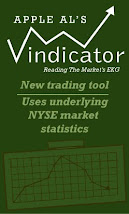Sunday, December 8, 2013
Sunday, 12/8/13 update
So far the short term scenario proposed for the ES/SPX in last weekend's update is playing out. The ES appears to have found a bottom in the recent corrective sequence at 1777.75, and has put in a rally that has the look of an impulse since that time, although there have been only three legs to that rally into Friday's close. The 1777.75 low on Wednesday did not overlap the assumed 1st wave high of 1774.50 in the pattern from the 1640.00 low of early October, so the premise of an extended wave 1 followed by shorter waves 3 and 5 remains intact. Also, wave 4 in this pattern, which just concluded, is a flat and thus alternates with the 2nd wave zig-zag structure. So assuming that the rally from last week's low continues to all time highs, then it would be a 5th wave in this scenario. Since wave 1 exceeds the length of wave 3, then the maximum allowable travel for this 5th wave is the 72.75 point travel of that 3rd wave. So measuring from the wave 4 low at 1777.75, the lid on the sequence is at 1850.50.
If the market rallies past the 1850.50 limit, then last Wednesday's low is most likely a 2nd wave in a developing extended impulse from the 1736.50 low of Nov 8.
------------------------------------------------------------------------------------------------------------------------------
The news of a 7.0% unemployment rate on Friday sparked that day's rally. But what are the implications for Fed policy? Bernanke and other Fed governors have said that their goal with all the QE's has been a7% rate, now that we appear to be there, does that mean that the Fed will start pulling in the reins? The implications are potentially ominous, not only for US equity values but for the economy as a whole. The party on Wall Street has been reliant on the Fed Reserve punch bowl to some extent, what happens if they take the punch bowl away? But equally as concerning is the effect on the economy of any Fed tightening. If the Fed stops pumping out cash by means of buying Treasuries and MBS's the inevitable result has to be an uptick in interest rates. Naturally this should result in a drag on the economy to some extent. But more importantly the effect on the Federal budget could be profound and very damaging. If interest rates move toward their post-WWII norm of around 6% the US Treasury will see an increase in it's interest payments in the $400 billion/yr range - a major dent in the Federal fisc. Unless the rest of the Fed budget is reduced to the same extent - fat chance!! - this will necessitate an even higher level of borrowing which in turn leads to ever higher interest expense. A problem anyone who has ever gotten into debt trouble with their personal finances is familiar with (yes, I've been there) - it's a spiral that feeds on itself and usually can't be solved without some pain. Also, increased Treasury borrowing coupled with a withdrawal by the Fed from the market for that borrowing is bound to crowd out the private market, thus putting a damper (or worse) on economic growth. Of course, slower economic growth means less tax revenue and higher deficits and even more Treasury borrowing. This is not a pretty picture.
My guess is that Yellen, with her dovish monetary inclinations, won't pull in the Fed's ears. This means there would most likely be some serious inflation in the offing, which again would lead to higher interest rates with the same outcomes.
All of this translates to the same place as far as prospects for US equities : down. But the market hasn't shown the inclination to head that way in any serious fashion as of yet. The trend is your friend, and right now the trend remains up.
blog comments powered by Disqus
Subscribe to:
Post Comments (Atom)

